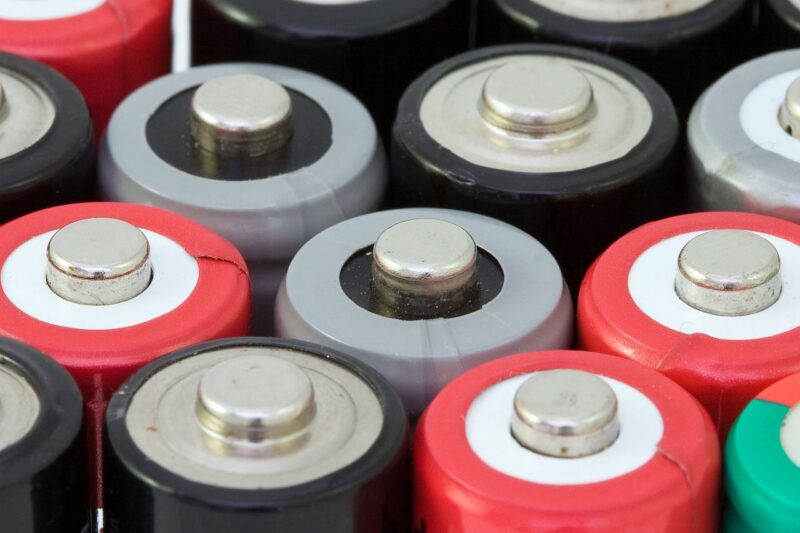
Batteries are an essential part of modern technology, powering everything from our smartphones and laptops to electric vehicles and renewable energy systems. But how exactly do they work? Understanding the chemistry of batteries is crucial for harnessing their full potential, and this article will delve deep into the fascinating world of battery technology.
1. What is a Battery?
A battery is a device that stores energy in the form of chemical energy and converts it into electrical energy through electrochemical reactions. At its core, a battery contains one or more electrochemical cells, where chemical reactions occur to produce a flow of electrons, providing electrical energy to connected devices.
Batteries are commonly classified into two categories:
- Primary Batteries: These are non-rechargeable batteries, meaning once they discharge, they cannot be recharged. Common examples include alkaline batteries used in remote controls and flashlights.
- Secondary Batteries: These are rechargeable batteries, which can be used multiple times by reversing the chemical reaction during charging. Examples include lithium-ion batteries used in smartphones and electric vehicles.
Understanding how these batteries function is key to understanding their applications in our daily lives.
2. Basic Components of Batteries
Batteries contain several key components that play a pivotal role in their operation:
- Anode: The anode is the negative terminal of the battery and is where oxidation occurs during the discharge cycle. In other words, it loses electrons, which flow through the external circuit to produce electricity.
- Cathode: The cathode is the positive terminal and is where reduction occurs. It gains the electrons flowing from the anode, completing the circuit.
- Electrolyte: The electrolyte is a conductive medium that allows ions to move between the anode and cathode. It can be a liquid, gel, or solid material, depending on the type of battery.
This passage of ions is essential for the chemical reactions that generate electric current. - Separator: The separator is a porous material that prevents the anode and cathode from directly contacting each other while allowing ionic movement between them. This is crucial to prevent short circuits and maintain battery safety.
Each component plays a significant role in the overall function of a battery, and the materials used can drastically affect performance and efficiency.
3. The Chemistry Behind Battery Operation
At the heart of every battery lies oxidation-reduction (redox) reactions that are responsible for converting chemical energy into electrical energy. Let’s explore how this process works in detail:
3.1 Discharge Process
During battery discharge, electrons are released from the anode. For example, in a typical alkaline battery, zinc (Zn) at the anode undergoes oxidation:
**Oxidation Half-Reaction:**
Zn → Zn²⁺ + 2e⁻
The released electrons travel through the external circuit to the cathode, where a reduction reaction occurs. In the case of alkaline batteries, manganese dioxide (MnO₂) serves as the cathode:
**Reduction Half-Reaction:**
MnO₂ + 2e⁻ + H₂O → Mn(OH)₂
This flow of electrons generates the electrical current that powers devices.
3.2 Recharge Process
In rechargeable batteries, the processes are reversed during charging. When a lithium-ion battery charges, lithium ions migrate from the cathode to the anode, where they are stored until the battery is discharged again. The reactions that occur during charging are essentially the reverse of discharge reactions, illustrating the cyclical nature of these battery types.
**Charging Half-Reaction at the Cathode:**
LiCoO₂ + Li⁺ + e⁻ → Li₂CoO₂
**Charging Half-Reaction at the Anode:**
Li⁺ + e⁻ + C → LiC
This rechargeability is one of the significant advantages of secondary batteries like lithium-ion, making them environmentally friendly and cost-effective in the long run.
4. Types of Batteries and Their Applications
Different battery types have varying chemistries and characteristics, making them suitable for specific applications. Here are some common types:
- Alkaline Batteries: Widely used in household devices such as remotes and flashlights. Their high energy density makes them reliable for low-drain applications.
- Lead-Acid Batteries: Commonly used in vehicles, they can deliver high bursts of power for starting engines. They are affordable but heavy compared to newer technologies.
- Lithium-Ion Batteries: Predominantly used in mobile devices, laptops, and electric vehicles, lithium-ion batteries have high energy density, low weight, and excellent cycle life, making them very popular in the modern world. They are essential in the shift towards renewable energy sources through energy storage systems.
- Nickel-Metal Hydride (NiMH) Batteries: Often used in hybrid vehicles, NiMH batteries offer a good balance of performance and cost-effectiveness compared to lithium-ion batteries.
Each battery chemistry has its advantages and trade-offs, influencing their selection for different types of applications.
5. The Future of Battery Technology
As technology advances, so does battery research and development, leading to promising innovations on the horizon. Some key developments include:
- Solid-State Batteries: These batteries utilize solid electrolytes, which can enhance energy density, safety, and longevity compared to liquid electrolyte batteries. Research is ongoing to improve manufacturing scalability and cost-effectiveness.
- Sodium-Ion Batteries: Offering a sustainable alternative to lithium-ion, sodium-ion batteries leverage abundant and inexpensive sodium resources, potentially making energy storage more accessible and environmentally friendly.
- Graphene Batteries: Utilizing graphene, these batteries promise higher charge rates, increased energy densities, and enhanced lifespans, positioning them as a game-changer for electric vehicles and portable electronics if commercialized effectively.
As we push for cleaner energy sources and sustainable practices, the future of battery technology is poised to play a pivotal role in transforming how we store and use energy.
Conclusion
Batteries are an indispensable part of our daily lives, powering essential devices and facilitating the shift toward renewable energy. Understanding the chemistry behind batteries can empower us to make informed choices about their use, recycling, and development. As technology continues to advance, the evolution of batteries will play a vital role in shaping a more sustainable and energy-efficient future.
Whether you’re an engineer, scientist, or everyday consumer, the ever-evolving world of batteries is exhilarating, and keeping abreast of developments can enable responsible use and advocacy for innovative energy storage solutions.








